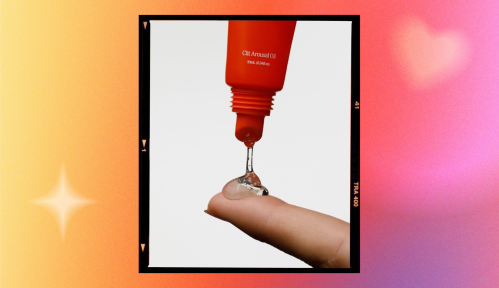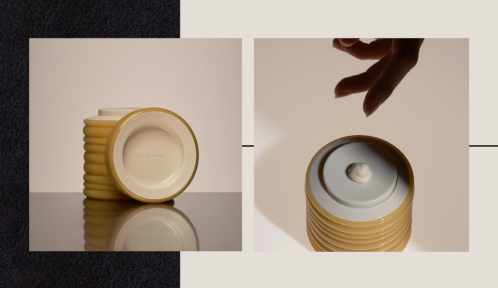Our editors independently select these products. Making a purchase through our links may earn Well+Good a commission
Well beyond your teen years and still dealing with pesky breakouts? If conventional topicals (think salicylic acid, benzoyl peroxide, and sulfur) aren’t quite cutting it to keep blemishes at bay, perhaps it’s time to add something new—and super promising—into your rotation. Enter: succinic acid, a buzzy skin-care ingredient that has the potential to clarify *and* hydrate your skin, sans irritation.
Experts in This Article
director of cosmetic and clinical research in dermatology and associate professor of dermatology at Mount Sinai Hospital
board-certified dermatologist in New York City
First, what is succinic acid?
“Succinic acid is a compound derived from sugar cane, among other natural sources,” says Joshua Zeichner, MD, a board-certified dermatologist based in New York City. “It is most commonly used in skin care for its antimicrobial and anti-inflammatory benefits on the skin, which is why succinic acid is often found in products used to treat acne.” However, there are a few caveats when it comes to labeling it as a one-and-done, breakout-busting hero. (More on that later.)
The benefits of succinic acid
Succinic acid’s star is on the rise (it’s got more than over 116M TikTok views to date) thanks to its well-rounded benefits that include, but go well beyond, helping to clarify acne-prone skin. Michele Green, MD, a board-certified dermatologist based in New York City, gives us a master class on the benefits of succinic acid below.
1. It kills acne-causing bacteria
“Succinic acid contains antimicrobial properties that have been shown to inhibit the growth of bacteria and fungi responsible for causing acne breakouts,” says Dr. Green. Since acne is usually caused by bacteria trapped inside your pores, getting rid of that bacteria with an antimicrobial ingredient, like this one, can prevent zits from ever popping up in the first place.
2. It helps with a range of inflammatory skin conditions
Given this acid’s anti-inflammatory properties, it turns out that it has the potential to work its magic on other skin conditions besides acne, too. Dr. Green says that it’s “not only beneficial in calming acne lesions, but also in alleviating symptoms associated with eczema and psoriasis.”
3. It combats shine
“Because of its similarity to the skin’s natural lipids, succinic acid also controls excess sebum production,” says Dr. Green. When you normalize sebum levels, you not only prevent a shiny complexion but also buildup and clogged pores that result in breakouts.
4. It hydrates your skin
Since some acne-fighters can dry out your skin and sensitize it even further, the fact that succinic acid also happens to be immensely hydrating is a benefit that makes it all the more attractive. “It brings moisture to restore the skin’s natural protective barrier, and since it’s water-soluble, the skin can easily absorb it,” notes Dr. Green.
5. It protects skin from signs of aging
As if it didn’t sound impressive enough already, succinic acid can also be a worthy addition to your pro-aging skin-care routine. “It has antioxidant properties that protect the skin from free-radical damage caused by the sun’s UV rays,” says Dr. Green. “It also promotes skin cell rejuvenation and stimulates cellular turnover to increase elasticity and firmness.”
6. It’s safe and gentle enough for all skin types
Last but not least, Dr. Green adds that even those with sensitive skin should be able to tolerate succinic acid. “Although ‘acid’ is in its name, it is more similar to hyaluronic acid than salicylic acid or glycolic acidin terms of exfoliation that can cause irritation,” she explains. With that said, if your skin is extra sensitive, you’ll want to be a bit more cautious when integrating succinic acid into your routine—especially if you’re applying other active ingredients like retinol, AHAs, or BHAs. It’s also a good idea to do a patch test first to gauge tolerance.
Is succinic acid fully proven to treat acne?
While it sounds like succinic acid truly earns its hype, there are a few things worth pointing out about this overachieving ingredient. To start, Dr. Zeichner points out succinic acid alone isn’t an officially approved acne treatment (at least not yet), but instead may help other acne fighters.
“To be considered a true acne treatment, a product needs to be compliant with the FDA monograph on acne treatment products and contain an ingredient like benzoyl peroxide or salicylic acid,” he explains. However, he notes that using succinic acid in tandem with such ingredients is still a great option for people with acne-prone skin.
Dr. Green similarly calls out a lack of research available to date that demonstrates the safety and efficacy of succinic acid for skin—especially compared to the wealth of studies backing up the benefits of retinoids, benzoyl peroxide, and exfoliating acids. But all of this isn’t to say that you should rule it out completely; after all, both derms still give it the green light. “Anecdotal evidence has shown positive results,” Dr. Green continues, and she anticipates that succinic acid will be incorporated into more skin-care products with more research and approval.
Succinic acid skin-care products to try
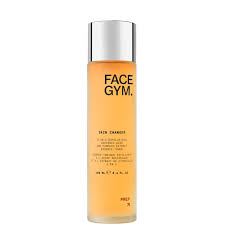
FaceGym Skin Changer 2-in-1 Exfoliating Essence-Toner — $49.00
This essence-toner hybrid was my first introduction to succinic acid—and my acne-prone can’t get enough of it. Formulated to target congestion, breakouts, dullness, and dehydration, the formula also includes upcycled pumpkin extract (an alternative for acne therapy) and gluconolactone, a hydrating and gently exfoliating polyhydroxy acid that’s also been shown to improve acne lesions with fewer side effects than benzoyl peroxide.
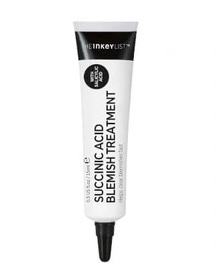
The INKEY List Succinic Acid Treatment — $9.00
This budget-friendly treatment from the Inkey List arguably put succinic acid on the map. “It contains 2 percent succinic acid along with 2 percent sulfur and 1 percent salicylic acid to spot treat acne blemishes,” says Dr. Green. “For acne-prone skin, succinic acid can pair well with salicylic acid; just be sure to introduce it slowly into your routine to prevent irritation.”
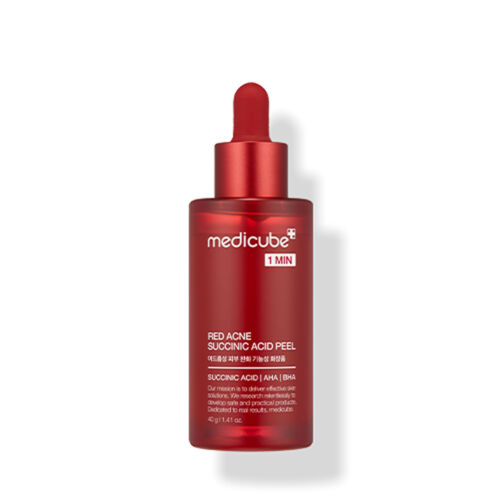
Medicube Red Acne Succinic Acid Peel — $41.00
As Dr. Zeichner noted above, succinic acid works best to banish breakouts when paired with other powerhouse ingredients (so long as your skin can tolerate them, of course). This wash-off peel from K-beauty brand Medicube packs lactic acid to support skin cell turnover, salicylic acid to clear pores, and multitasking succinic acid for greater skin clarity and balance in just 60 seconds.

Zelens Hyaluron Intense Hydro-Plumping Serum — $105.00
If you’re less concerned about clearing breakouts and are more intrigued by succinic acid’s other properties, Dr. Green suggests checking out this hydrating serum. “It contains hyaluronic acid, kaempferol (an antioxidant), and succinic acid to bring anti-aging benefits and hydration to the skin,” she shares.
For more intel on how to deal with adult acne, check out the video below.
Want to be the first to hear about the latest (and greatest) SHOP product drops, custom collections, discounts, and more? Sign up to have the intel delivered straight to your inbox.
Sign up for the Well+Good SHOP Newsletter
Get exclusive deals on wellness, beauty, fitness, and food products that have been hand-picked by our editors.
Got it, you've been added to our email list.

